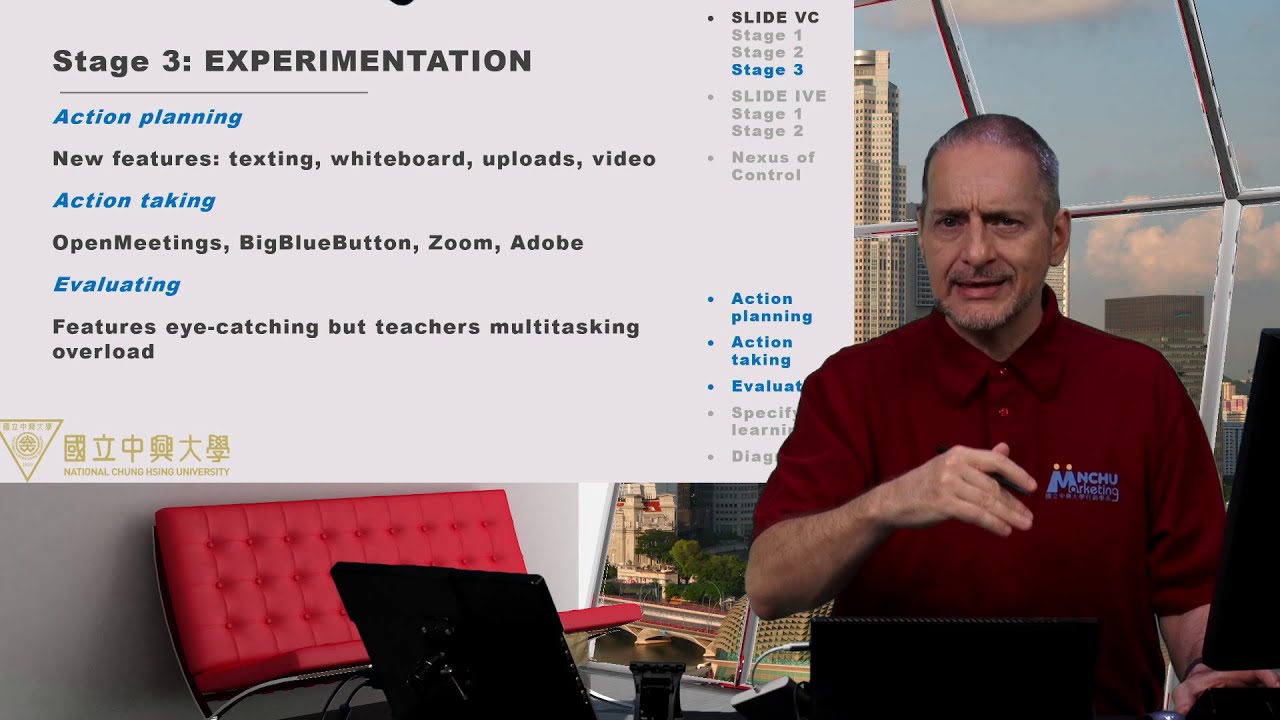Author: Clyde Warden
Institution: National Chung Hsing University
Country: Taiwan
Topic: Applications of Open Education Practices/Open Pedagogy/Open Education Research
Sector: Higher Education
UNESCO Area of Focus: Building capacity
Session Format: Presentation
Abstract
Open educational resources employed in synchronous online classes assume learners have a skill level in both application usage and teachers can manage those students. Students, while skilled at watching video on demand, opening video meetings, and playing immersive virtual games, lack experience in formalized synchronized learning (Cole, 2009). Rather than focus on the mechanics of technology, we surface influential aspects of classroom management when executing Synchronous Learning through OER software such as Big Blue Button and Virtual Wonderland, which are open source packages allowing video and 3D virtual reality meetings for class instruction.In this presentation, we report a decade’s-long action research study on the attributes that help and hinder the application of OER and OEP across the technologies of Video Conferencing (VC) and Immersive Virtual Environments (IVE). With these attributes, instructors undertaking OER use will be better prepared to achieve desired pedagogical goals as well as knowing what to demand from institutional initiatives. Our multi-year study executed SLIDE classes without dependence on organizational infrastructure, technicians, or expensive commercial entities. Key attributes of success, however, are often counter intuitive.
Highly motivated teachers, looking to employ OER/OEP virtual learning environments, frequently face institutional difficulties. Classrooms typically embed asynchronous technologies that emphasize a one-way model of lecture and material delivery that already lag behind the on-demand Internet (Molenda & Bichelmeyer, 2005). Advances in the technologies of video, audio, and internet connectivity mean online teaching is a low cost and highly viable possibility. Yet, the critical synchronous aspects of an in-class experience remain difficult to implement.
Low cost and significant advances in technology now allow instructors to create their own virtual learning environments through adoption of OER and OEP. However, creating social interactions within a virtual space that emulate the physical classroom remains challenging. While students are familiar with virtual worlds and video meetings, they are inexperienced as virtual learners.
Over nine years period we applied iterative cycles of action research through numerous large classes all using open source technologies, OER, and OEP to systematically uncover attributes of success when executing synchronous learning in distributed environments. Findings show technology is not the source of problems; rather, difficulties emerge from human behaviors and their interactions with system features. We conclude with practical takeaway guidelines for video conferencing and immersive virtual environments and a model of nexus of control that elaborates software and classroom management attributes leading to success.
Keywords
Synchronous Online Class, Best Practices, Teaching Strategies
